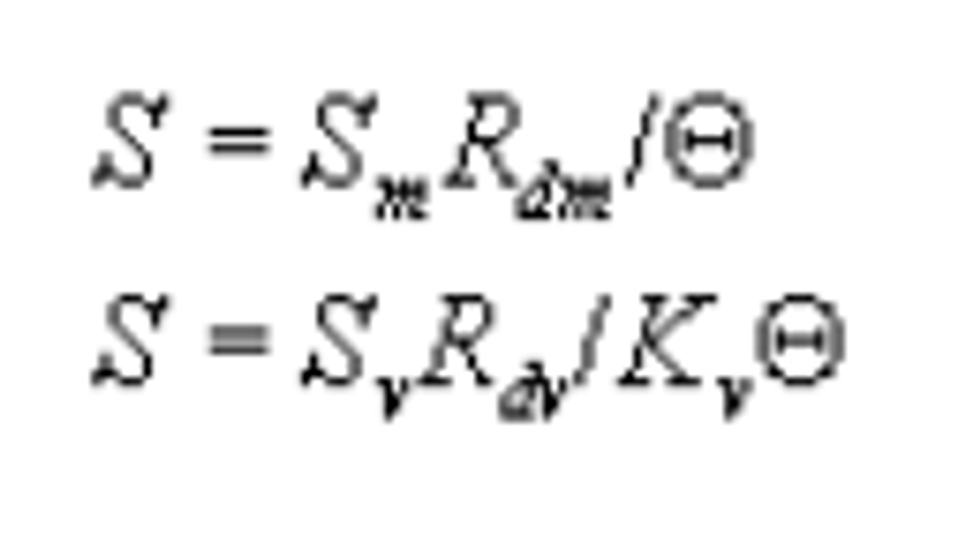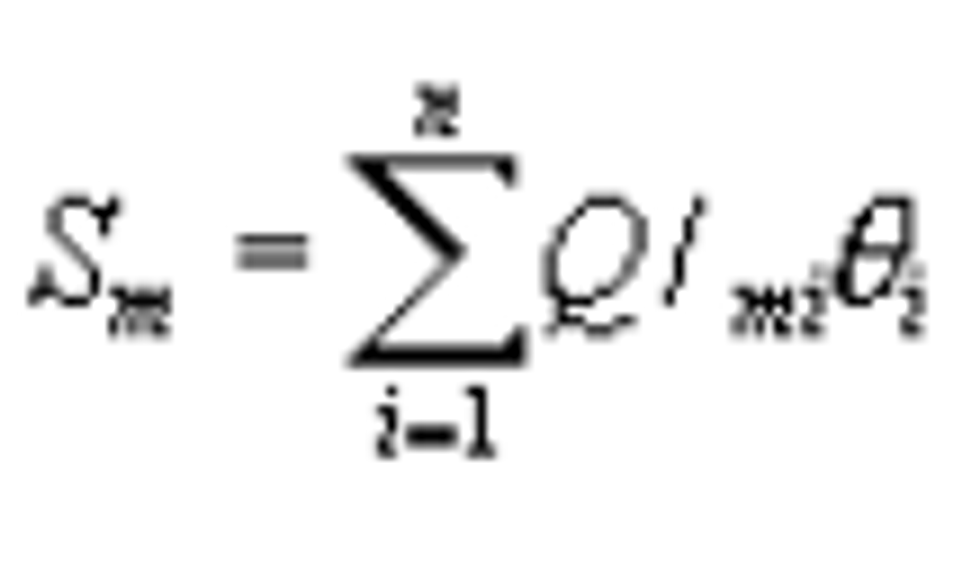['Air Programs']
['Air Quality']
11/20/2023
...
�60.150 Applicability and designation of affected facility.
(a) The affected facility is each incinerator that combusts wastes containing more than 10 percent sewage sludge (dry basis) produced by municipal sewage treatment plants, or each incinerator that charges more than 1000 kg (2205 lb) per day municipal sewage sludge (dry basis).
(b) Any facility under paragraph (a) of this section that commences construction or modification after June 11, 1973, is subject to the requirements of this subpart.
[42 FR 58521, Nov. 10, 1977]
�60.151 Definitions.
As used in this subpart, all terms not defined herein shall have the meaning given them in the Act and in subpart A of this part.
[39 FR 9319, Mar. 8, 1974]
�60.152 Standard for particulate matter.
(a) On and after the date on which the performance test required to be conducted by �60.8 is completed, no owner or operator of any sewage sludge incinerator subject to the provisions of this subpart shall discharge or cause the discharge into the atmosphere of:
(1) Particulate matter at a rate in excess of 0.65 g/kg dry sludge input (1.30 lb/ton dry sludge input).
(2) Any gases which exhibit 20 percent opacity or greater.
[39 FR 9319, Mar. 8, 1974, as amended at 40 FR 46259, Oct. 6, 1975]
�60.153 Monitoring of operations.
(a) The owner or operator of any sludge incinerator subject to the provisions of this subpart shall:
(1) Install, calibrate, maintain, and operate a flow measuring device which can be used to determine either the mass or volume of sludge charged to the incinerator. The flow measuring device shall be certified by the manufacturer to have an accuracy of �5 percent over its operating range. Except as provided in paragraph (d) of this section, the flow measuring device shall be operated continuously and data recorded during all periods of operation of the incinerator.
(2) Provide access to the sludge charged so that a well-mixed representative grab sample of the sludge can be obtained.
(3) Install, calibrate, maintain, and operate a weighing device for determining the mass of any municipal solid waste charged to the incinerator when sewage sludge and municipal solid waste are incinerated together. The weighing device shall have an accuracy of �5 percent over its operating range.
(b) The owner or operator of any multiple hearth, fluidized bed, or electric sludge incinerator subject to the provisions of this subpart shall comply with the requirements of paragraph (a) of this section and:
(1) For incinerators equipped with a wet scrubbing device, install, calibrate, maintain and operate a monitoring device that continuously measures and records the pressure drop of the gas flow through the wet scrubbing device. Where a combination of wet scrubbers is used in series, the pressure drop of the gas flow through the combined system shall be continuously monitored. The device used to monitor scrubber pressure drop shall be certified by the manufacturer to be accurate within �250 pascals (�1 inch water gauge) and shall be calibrated on an annual basis in accordance with the manufacturer's instructions.
(2) Install, calibrate, maintain and operate a monitoring device that continuously measures and records the oxygen content of the incinerator exhaust gas. The oxygen monitor shall be located upstream of any rabble shaft cooling air inlet into the incinerator exhaust gas stream, fan, ambient air recirculation damper, or any other source of dilution air. The oxygen monitoring device shall be certified by the manufacturer to have a relative accurancy of �5 percent over its operating range and shall be calibrated according to method(s) prescribed by the manufacturer at least once each 24-hour operating period.
(3) Install, calibrate, maintain and operate temperature measuring devices at every hearth in multiple hearth furnaces; in the bed and outlet of fluidized bed incinerators; and in the drying, combustion, and cooling zones of electric incinerators. For multiple hearth furnaces, a minimum of one temperature measuring device shall be installed in each hearth in the cooling and drying zones, and a minimum of two temperature measuring devices shall be installed in each hearth in the combustion zone. For electric incinerators, a minimum of one temperature measuring device shall be installed in the drying zone and one in the cooling zone, and a minimum of two temperature measuring devices shall be installed in the combustion zone. Each temperature measuring device shall be certified by the manufacturer to have an accuracy of �5 percent over its operating range. Except as provided in paragraph (d) of this section, the temperature monitoring devices shall be operated continuously and data recorded during all periods of operation of the incinerator.
(4) Install, calibrate, maintain and operate a device for measuring the fuel flow to the incinerator. The flow measuring device shall be certified by the manufacturer to have an accuracy of �5 percent over its operating range. Except as provided in paragraph (d) of the section, the fuel flow measuring device shall be operated continuously and data recorded during all periods of operation of the incinerator.
(5) Except as provided in paragraph (d) of this section, collect and analyze a grab sample of the sludge fed to the incinerator once per day. The dry sludge content and the volatile solids content of the sample shall be determined in accordance with the method specified under �60.154(b)(5), except that the determination of volatile solids, step (3)(b) of the method, may not be deleted.
(c) The owner or operator of any multiple hearth, fluidized bed, or electric sludge incinerator subject to the provisions of this subpart shall retain the following information and make it available for inspection by the Administrator for a minimum of 2 years:
(1) For incinerators equipped with a wet scrubbing device, a record of the measured pressure drop of the gas flow through the wet scrubbing device, as required by paragraph (b)(1) of this section.
(2) A record of the measured oxygen content of the incinerator exhaust gas, as required by paragraph (b)(2) of this section.
(3) A record of the rate of sludge charged to the incinerator, the measured temperatures of the incinerator, the fuel flow to the incinerator, and the total solids and volatile solids content of the sludge charged to the incinerator, as required by paragraphs (a)(1), (b)(3), (b)(4), and (b)(5) of this section.
(d) The owner or operator of any multiple hearth, fluidized bed, or electric sludge incinerator subject to the provisions of this subpart from which the particulate matter emission rate measured during the performance test required under �60.154(d) is less than or equal to 0.38 g/kg of dry sludge input (0.75 lb/ton) shall be required to comply with the requirements in paragraphs (a), (b), and (c) of this section during all periods of this incinerator following the performance test except that:
(1) Continuous operation of the monitoring devices and data recorders in paragraphs (a)(1), (b)(3), and (b)(4) of this section shall not be required.
(2) Daily sampling and analysis of sludge feed in paragraph (b)(5) of this section shall not be required.
(3) Recordkeeping specified in paragraph (c)(3) of this section shall not be required.
(e) The owner or operator of any sludge incinerator other than a multiple hearth, fluidized bed, or electric incinerator or any sludge incinerator equipped with a control device other than a wet scrubber shall submit to the Administrator for approval a plan for monitoring and recording incinerator and control device operation parameters. The plan shall be submitted to the Administrator:
(1) No later than 90 days after October 6, 1988, for sources which have provided notification of commencement of construction prior to October 6, 1988.
(2) No later than 90 days after the notification of commencement of construction, for sources which provide notification of commencement of construction on or after October 6, 1988.
(3) At least 90 days prior to the date on which the new control device becomes operative, for sources switching to a control device other than a wet scrubber.
[36 FR 24877, Dec. 23, 1971, as amended at 53 FR 39416, Oct. 6, 1988; 65 FR 61756, Oct. 17, 2000]
�60.154 Test methods and procedures.
(a) In conducting the performance tests required in �60.8, the owner or operator shall use as reference methods and procedures the test methods in appendix A of this part or other methods and procedures as specified in this section, except as provided for in �60.8(b).
(b) The owner or operator shall determine compliance with the particulate matter emission standards in �60.152 as follows:
(1) The emission rate (E) of particulate matter for each run shall be computed using the following equation:

Where:
E = Emission rate of particulate matter, g/kg (lb/ton) of dry sludge input.
cs = Concentration of particulate matter, g/dscm (gr/dscf).
Qsd = Volumetric flow rate of effluent gas, dscm/hr (dscf/hr).
S = Charging rate of dry sludge during the run, kg/hr (ton/hr).
K = Conversion factor, 1.0 g/g (7,000 gr/lb).
(2) Method 5 shall be used to determine the particulate matter concentration (cs) and the volumetric flow rate (Qsd) of the effluent gas. The sampling time and sample volume for each run shall be at least 60 minutes and 0.90 dscm (31.8 dscf).
(3) The dry sludge charging rate (S) for each run shall be computed using either of the following equations:

Where:
S = Charging rate of dry sludge, kg/hr (ton/hr).
Sm = Total mass of sludge charge, kg (ton).
Rdm = Average mass of dry sludge per unit mass of sludge charged, kg/kg (ton/ton).
? = Duration of run, hr.
Sv = Total volume of sludge charged, m 3 (gal).
Rdv = Average mass of dry sludge per unit volume of sludge charged, kg/m 3 (lb/gal).
Kv = Conversion factor, 1 g/g (2,000 lb/ton).
(4) the flow measuring device of �60.153(a)(1) shall be used to determine the total mass (Sm) or volume (Sv) of sludge charged to the incinerator during each run. If the flow measuring device is on a time rate basis, readings shall be taken and recorded at 5-minute intervals during the run and the total charge of sludge shall be computed using the following equations, as applicable:


Where:
Sm = Total mass of sludge charged to the incinerator during the test run.
Sv = Total volume of sludge charged to the incinerator during the test run.
Qmi = Average mass flow rate calculated by averaging the flow rates at the beginning and end of each interval �i,� kg/hr (ton/hr).
Qvi = Average volume flow rate calculated by averaging the flow rates at the beginning and end of each interval �i,� m 3/hr (gal/hr).
?i = Duration of interval �i,� hr.
(5) Samples of the sludge charged to the incinerator shall be collected in nonporous jars at the beginning of each run and at approximately 1-hour intervals thereafter until the test ends; and �2540 G. Total, Fixed, and Volatile Solids in Solid and Semisolid Samples, in Standard Methods for the Examination of Water and Wastewater, 20th Edition, 1998� (incorporated by reference - see �60.17) shall be used to determine dry sludge content of each sample (total solids residue), except that:
(i) Evaporating dishes shall be ignited to at least 103�C rather than the 550�C specified in step 3(a)(1).
(ii) Determination of volatile residue, step 3(b) may be deleted.
(iii) The quantity of dry sludge per unit sludge charged shall be determined in terms of kg/m 3 (lb/gal) or kg/kg (ton/ton).
(iv) The average dry sludge content shall be the arithmetic average of all the samples taken during the run.
(6) Method 9 and the procedures in �60.11 shall be used to determine opacity.
(c) [Reserved]
(d) The owner or operator of any sludge incinerator subject to the provisions of this subpart shall conduct a performance test during which the monitoring and recording devices required under �60.153(a)(1), (b)(1), (b)(2), (b)(3), and (b)(4) are installed and operating and for which the sampling and analysis procedures required under �60.153(b)(5) are performed. The owner or operator shall provide the Administrator at least 30 days prior notice of the performance test to afford the Administrator the opportunity to have an observer present.
(1) For incinerators that commenced construction or modification on or before April 18, 1986, the performance test shall be conducted within 360 days of the effective date of these regulations unless the monitoring and recording devices required under �60.153(a)(1), (b)(1), (b)(2), (b)(3), and (b)(4) were installed and operating and the sampling and analysis procedures required under �60.153(b)(5) were performed during the most recent performance test and a record of the measurements taken during the performance test is available.
(2) For incinerators that commence construction or modification after April 18, 1986, the date of the performance test shall be determined by the requirements in �60.8.
[54 FR 6668, Feb. 14, 1989, as amended at 54 FR 27015, June 27, 1989; 59 FR 5108, Feb. 3, 1994; 65 FR 61756, Oct. 17, 2000; 79 FR 11250, Feb. 27, 2014]
�60.155 Reporting.
(a) The owner or operator of any multiple hearth, fluidized bed, or electric sludge incinerator subject to the provisions of this subpart shall submit to the Administrator semi-annually a report in writing which contains the following:
(1) A record of average scrubber pressure drop measurements for each period of 15 minutes duration or more during which the pressure drop of the scrubber was less than, by a percentage specified below, the average scrubber pressure drop measured during the most recent performance test. The percent reduction in scrubber pressure drop for which a report is required shall be determined as follows:
(i) For incinerators that achieved an average particulate matter emission rate of 0.38 kg/Mg (0.75 lb/ton) dry sludge input or less during the most recent performance test, a scrubber pressure drop reduction of more than 30 percent from the average scrubber pressure drop recorded during the most recent performance test shall be reported.
(ii) For incinerators that achieved an average particulate matter emission rate of greater than 0.38 kg/Mg (0.75 lb/ton) dry sludge input during the most recent performance test, a percent reduction in pressure drop greater than that calculated according to the following equation shall be reported:
P=?111E + 72.15
where P = Percent reduction in pressure drop, and
E = Average particulate matter emissions (kg/megagram)
(2) A record of average oxygen content in the incinerator exhaust gas for each period of 1-hour duration or more that the oxygen content of the incinerator exhaust gas exceeds the average oxygen content measured during the most recent performance test by more than 3 percent.
(b) The owner or operator of any multiple hearth, fluidized bed, or electric sludge incinerator from which the average particulate matter emission rate measured during the performance test required under �60.154(d) exceeds 0.38 g/kg of dry sludge input (0.75 lb/ton of dry sludge input) shall include in the report for each calendar day that a decrease in scrubber pressure drop or increase in oxygen content of exhaust gas is reported a record of the following:
(1) Scrubber pressure drop averaged over each 1-hour incinerator operating period.
(2) Oxygen content in the incinerator exhaust averaged over each 1-hour incinerator operating period.
(3) Temperatures of every hearth in multiple hearth incinerators; of the bed and outlet of fluidized bed incinerators; and of the drying, combustion, and cooling zones of electric incinerators averaged over each 1-hour incinerator operating period.
(4) Rate of sludge charged to the incinerator averaged over each 1-hour incinerator operating period.
(5) Incinerator fuel use averaged over each 8-hour incinerator operating period.
(6) Moisture and volatile solids content of the daily grab sample of sludge charged to the incinerator.
(c) The owner or operator of any sludge incinerator other than a multiple hearth, fluidized bed, or electric incinerator or any sludge incinerator equipped with a control device other than a wet scrubber shall include in the semi-annual report a record of control device operation measurements, as specified in the plan approved under �60.153(e).
[53 FR 39417, Oct. 6, 1988]
�60.156 Delegation of authority.
(a) In delegating implementation and enforcement authority to a State under section 111(c) of the Act, the authorities contained in paragraph (b) of this section shall be retained by the Administrator and not transferred to a State.
(b) Authorities which will not be delegated to States: �60.153(e).
[53 FR 39418, Oct. 6, 1988]
['Air Programs']
['Air Quality']
UPGRADE TO CONTINUE READING
Load More
J. J. Keller is the trusted source for DOT / Transportation, OSHA / Workplace Safety, Human Resources, Construction Safety and Hazmat / Hazardous Materials regulation compliance products and services. J. J. Keller helps you increase safety awareness, reduce risk, follow best practices, improve safety training, and stay current with changing regulations.
Copyright 2025 J. J. Keller & Associate, Inc. For re-use options please contact copyright@jjkeller.com or call 800-558-5011.
